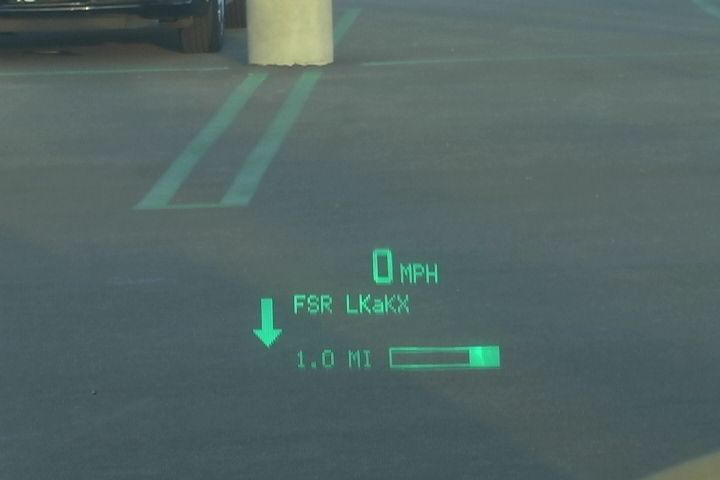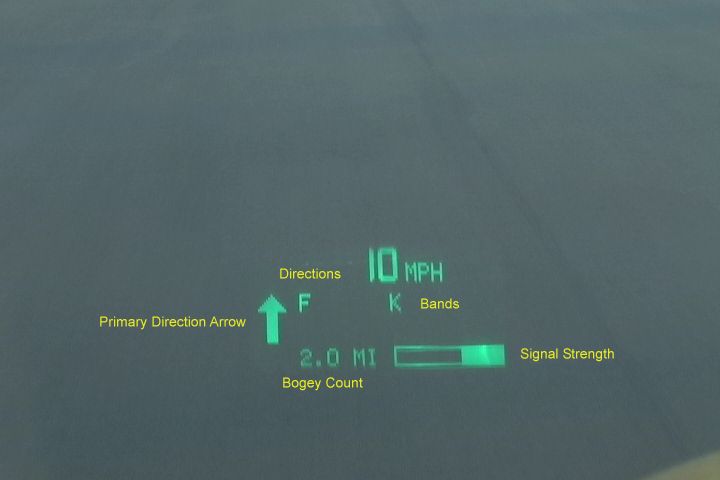



    |
HUD One |
Somewhere in the interior of this C6
Corvette is a concealed display for a Valentine One RADAR
locator. It's in plain sight in the photograph below. Can you find
it?



So why is this a big deal? In
addition to the sheer coolness factor, having a truly concealed
display serves a very practical purpose: it conceals the fact that
I have a RADAR detector installed in my Corvette. Thieves who peer
into my car looking for valuables won't see anything (the V1
itself is on a slide mount, and I take it away with me whenever I
leave the car). Other drivers who do not have a RADAR detector of
their own won't drive in close proximity to my car to leech off of
my RADAR detector's warnings. While a RADAR detector can help one
avoid tickets, it's not a magic shield. If I ever do get pulled
over, hiding my RADAR detector from the Law Enforcement Officer
(LEO) who is walking up to your side window is extremely
important. Even in areas where RADAR detector use is legal, many
LEOs believe that RADAR detector users are sly, habitual
offenders; if they see a RD in my car, that warning I was
about to receive could be instantly transformed into a ticket.
Better safe than sorry!
The HUD One also supports the Escort
Passport 9500ci RADAR/LIDAR detector. All display modes and
functions are fully supported, including the marked location (red
light camera, speed trap, etc.) features via a similar overloading
of the C6 HUD's navigation icons. In fact, the HUD One supports
both the Valentine One and the 9500ci at the same time, combining the output of both
detectors into one coordinated display on the HUD.
Here's a video
of the HUD One in action. Note that both the V1 and the 9500ci
detectors are reporting a Ka band bogey ahead. The 9500ci display
is set to spec mode.
Because the C6 HUD was never designed
for use as a RADAR detector display, some compromises had to be
made when adapting it. For example, the HUD arrow icons can only
indicate a single direction at a time, whereas the V1 can display
a front arrow, 2 side arrows, and a rear arrow simultaneously. The
V1 indicates the source of the strongest/most important signal
with a flashing arrow, so the HUD One's arrow icon corresponds to
this flashing arrow whenever the V1 displays more than one arrow
simultaneously. Another quirk is the use of the distance indicator
as a bogey counter; there is a superfluous "MI" (for "miles") or
"KM" (for "kilometers") after the bogey count which cannot be
suppressed. Fortunately it doesn't take long for the driver to
adapt to these minor nuisances.
In addition to the primary threat
direction icon, the all displayed V1 arrows are shown on the
status line, with 'F' standing for "Front," 'S' for "Sides," and
'R' for "Rear." This status line also shows the frequency bands of
all received signals, with 'X' for X-band, 'K' for K-band, "Ka"
for Ka-band, "Ku" for Ku-band (used primarily in Europe), and 'L'
for LIDAR.
For the 9500ci, RADAR/LIDAR threat
information is displayed on the status line (if both a V1 and a
9500ci are installed, the 9500ci uses the second HUD status line).
With minor exceptions, the same characters that would be displayed
on the 9500ci's own display will appear on the HUD status line.
The exceptions are the "arrow" character (used to indicate
direction to a marked location) and the "satellite" character
(used to indicate GPS signal status). The HUD One displays the
direction to a marked location using the same arrow icons that are
used for the V1 directional arrows, whereas the GPS signal status
is displayed textually on the status line along with the current
mode whenever there is a change.
Have you ever missed an alert from
your RADAR detector because your car stereo was turned up too
loud? That could be a very costly mistake, so the HUD One
automatically mutes the OEM stereo for 4 seconds whenever either
detector sounds an alert. This is done by sending the same Class 2
bus commands that the On*Star module sends in order to mute the
stereo for an incoming phone call. Since the V1 is somewhat
"chatty" when driving in town, the stereo mute feature has a bit
of hysteresis: the mute will only be activated for the first alert
after 60 or more seconds of no alerts. Note that the mute function
only works with C6 factory stereos; the HUD One cannot mute
aftermarket stereos.
The HUD One also supports an
auxiliary mute button in the form of a SPST momentary push-button
switch; mine is mounted in the "tombstone" panel in my center
console. When this button is pressed, the HUD One simulates a mute
button press on all attached RADAR detectors. This allows a mute
button to be mounted in the most convenient, ergonomic place
within the cockpit, regardless of where the RADAR detector(s) or
their control panel(s) are mounted.
The HUD One also has a USB port.
While originally intended for firmware updates, it can also
connect the HUD One to an external computer (e.g. a laptop or Car
PC). The status of both RADAR detectors as well as the car itself
is available to the connected PC in real time. For Car PCs running
the RideRunner
front-end software, I also developed a proof-of-concept plug-in
that puts the threat status on the PC's monitor. Here is a short
video of the plug-in in action:
Because the HUD-One is connected to
both RADAR detectors and the Class 2 bus, it is capable of
relaying all sorts of useful telemetry data to an attached laptop
computer. Using software such as RaceRender,
vehicle parameters such as speed, engine RPM,lateral acceleration,
brake status, temperature, and many others can be overlaid onto a
video recording as in the example below.
This last video is a "teaser"
introduction to the HUD-One. (NOTE: If the video doesn't play in
your browser, click here and select
"save as" to download it.)
The HUD One project is complete and fully-functional. Prototypes
have been in operation in several C6 Corvettes since 2010. For
more information about the HUD-One's development, click here.
All trademarks appearing on this web
page are trademarks of their respective owners.